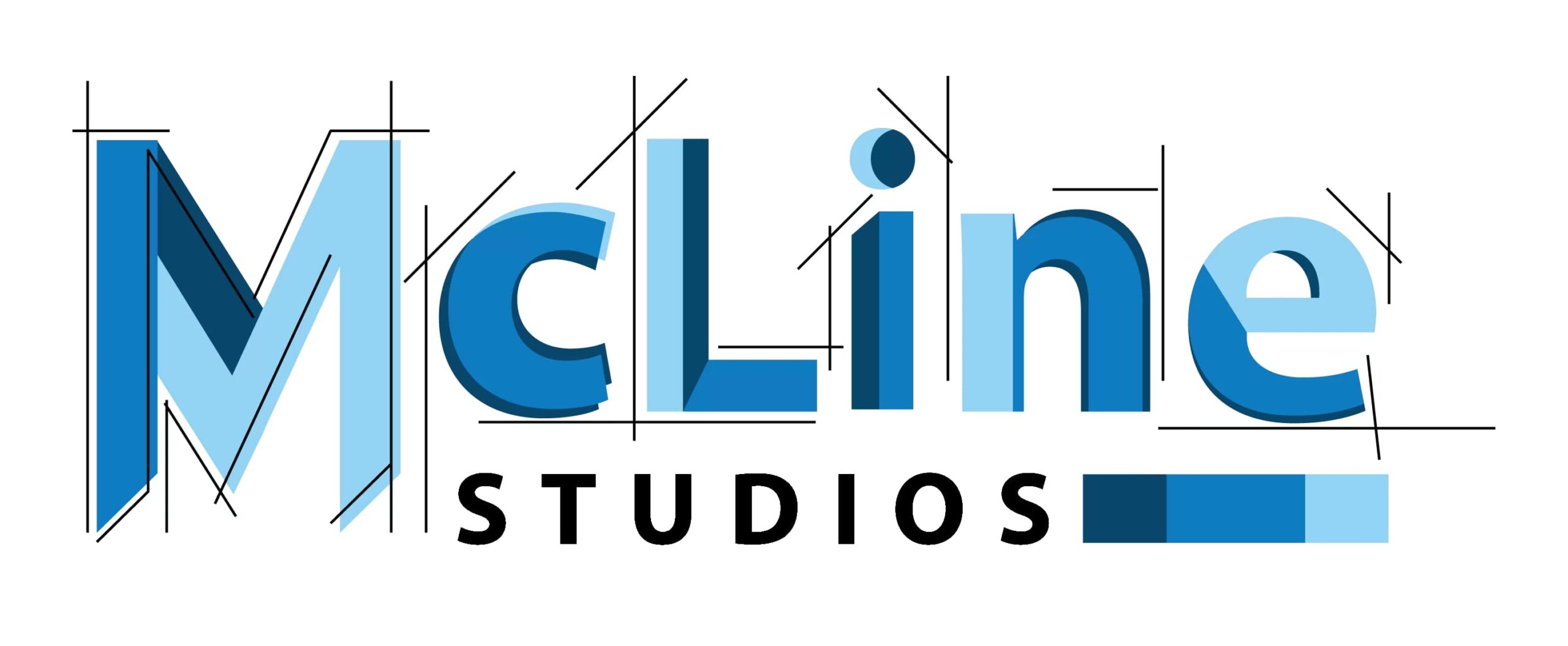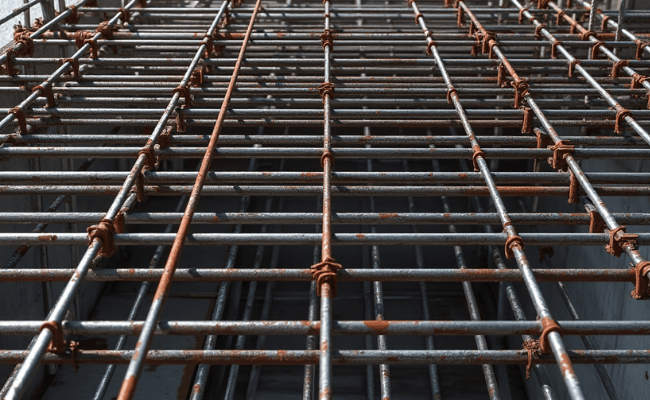At a busy construction site, workers were setting up the foundation for a new building. Trucks delivered materials, machines hummed, and steel bars lay in stacks, waiting to be placed. In the middle of it all, a supervisor studied a set of drawings. These weren’t just ordinary blueprints, they were rebar shop drawings, an essential part of the construction process.
Without these drawings, placing reinforcement bars (rebar) would be a challenge. Workers might cut bars to the wrong size, place them incorrectly, or miss key connections. This could weaken the structure, cause delays, and increase costs. Rebar shop drawings prevent these issues by providing clear instructions on how each bar should be cut, bent, and placed within the concrete.
But what exactly do these drawings include? How are they created? And why are they so important for a successful project? Let’s explore everything you need to know about rebar shop drawings.
Components Of Rebar Shop Drawings
Rebar shop drawings are detailed instructions that guide the construction team in placing reinforcement bars correctly. These drawings contain several key components, each playing an important role for accuracy and efficiency on-site.
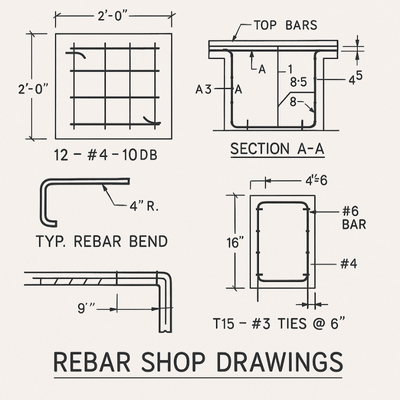
Bar Bending Schedule (BBS)
This is like a checklist for rebar fabrication. It provides details about each bar, including its length, diameter, shape, and bending angles. With this schedule, workers know exactly how to cut and bend the bars before placing them in the structure.
Rebar Layout and Placement Details
This part of the drawing shows where each bar should be positioned within the concrete. It includes spacing, lap splices (where bars overlap for strength), and connections with other reinforcement elements. Proper placement is critical to maintaining the structural integrity of the building.
Bar Marks and Labels
Every rebar piece is assigned a unique mark or number. These labels match the bar bending schedule, helping workers quickly identify and place the right bars in the right locations without confusion.
Sections and Elevation Views
To give a clear understanding of how rebar fits into the structure, the drawings include different views: top views, side sections, and elevation drawings. These help engineers and site workers visualize how reinforcement is distributed throughout the building.
Notes and Specifications
Rebar shop drawings also include special instructions, such as concrete cover requirements (the gap between rebar and the concrete surface), anchoring details, and any specific guidelines from the structural engineer.
Process Of Creating Rebar Shop Drawings
Creating rebar shop drawings is a step-by-step process that requires careful planning, attention to detail, and coordination between different teams. These drawings go through several stages to meet project requirements and safety standards. The process looks like this:
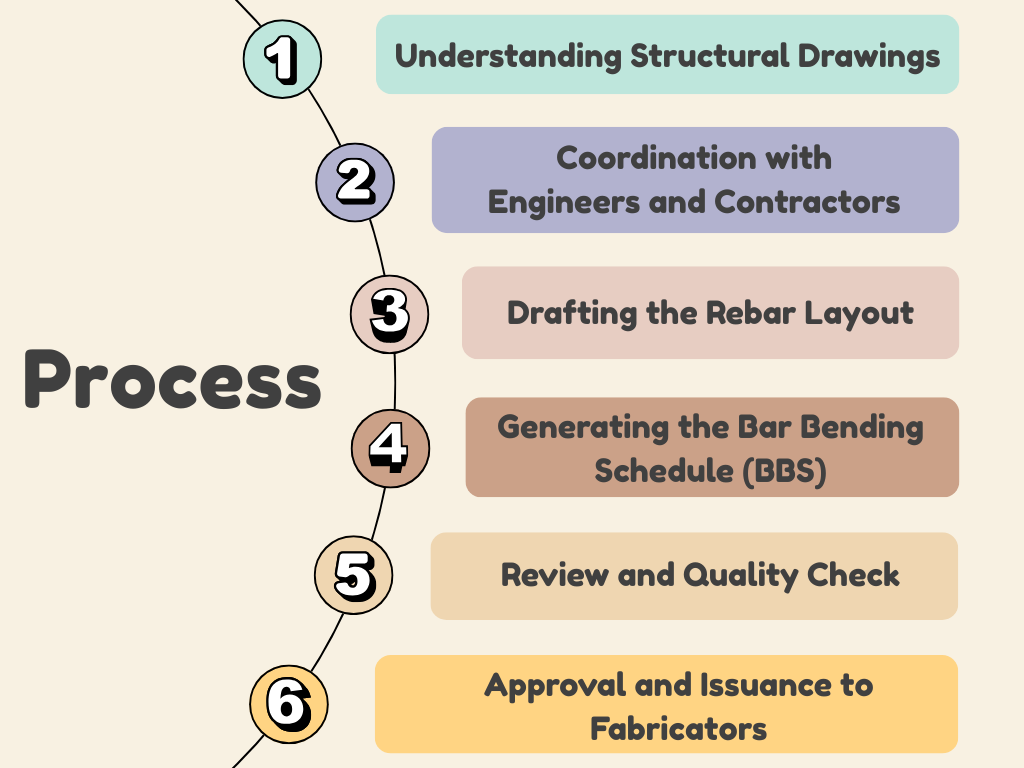
Step 1 – Understanding the Structural Drawings
The process begins with studying the structural drawings provided by the engineer. These blueprints outline the overall framework of the building, including the size and type of reinforcement needed. Before moving forward, detailers carefully review these drawings to understand the design intent.
Step 2 – Coordination with Engineers and Contractors
Once the structural details are clear, the drafting team works closely with engineers, contractors, and fabricators to clarify any doubts. This step helps align the rebar shop drawings with real-world construction conditions and avoids potential conflicts with other building elements like plumbing, electrical conduits, and formwork.
Step 3 – Drafting the Rebar Layout
Using specialized software like AutoCAD, Revit, or Tekla Structures, detailers create precise drawings that show the placement of each rebar piece. These drawings include bar marks, dimensions, bending shapes, lap splices, and other critical details that guide the fabrication and installation process.
Step 4 – Generating the Bar Bending Schedule (BBS)
Once the layout is finalized, a bar bending schedule (BBS) is prepared. This document lists every reinforcement bar required for the project, along with its size, shape, bending details, and quantity. It acts as a reference for fabricators, helping them cut and bend each bar correctly.
Step 5 – Review and Quality Check
Before finalizing the drawings, they go through a thorough review. Engineers and project managers check the accuracy of the dimensions, reinforcement details, and compliance with building codes. Any mistakes or conflicts are resolved at this stage to prevent costly errors during construction.
Step 6 – Approval and Issuance to Fabricators
After passing the quality check, the final shop drawings are submitted for approval. Once approved, they are sent to the fabricators and construction team for execution. The workers on-site then follow these drawings to cut, bend, and place the reinforcement exactly as specified.
The Importance Of Rebar Shop Drawings
Rebar shop drawings go beyond standard structural drawings by providing detailed instructions for fabricators and on-site workers. Without them, projects can face delays, material waste, and structural issues. These drawings help achieve accuracy in rebar placement by specifying exact measurements, positions, and bending details, reducing errors and eliminating guesswork.
Another key benefit is improved coordination among different teams. Construction projects involve engineers, fabricators, and site workers, all of whom rely on rebar shop drawings as a common reference.
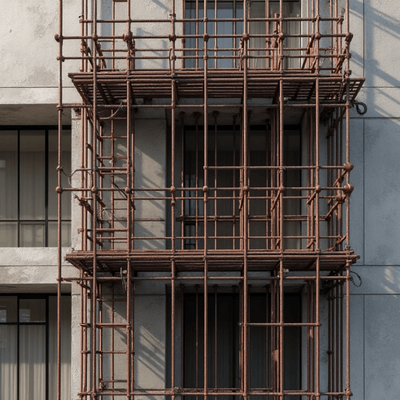
This helps prevent conflicts with other structural elements like beams, columns, and utilities. Additionally, these drawings help optimize material usage, reducing waste caused by incorrect cutting or bending of bars. With a clear plan in place, resources are used efficiently, keeping costs under control.
A well-prepared shop drawing also speeds up the construction process. When workers have clear instructions, they can place and install reinforcement more efficiently, helping the project stay on schedule.
Moreover, these drawings help maintain compliance with design specifications and safety standards. Proper rebar placement enhances the strength of the structure, minimizing the risk of cracks or failures over time.
Wrapping It Up
In short, rebar shop drawings are more than just technical documents. They are the backbone of reinforced concrete construction. They take the guesswork out of placing reinforcement bars, making the entire process smoother, faster, and more reliable. Without them, construction teams would struggle with misaligned bars, material waste, and delays that could impact the entire project.
By mapping out precise details like bar placement, bending shapes, and connections, these drawings bring clarity to the job site. They bridge the gap between engineers, fabricators, and workers, helping everyone stay on the same page. With accurate planning, resources are used wisely, keeping costs under control and the project on track.
Most importantly, rebar shop drawings contribute to the strength and safety of a structure. Properly placed reinforcement bars help the building handle loads, resist cracks, and stand the test of time. In the fast-paced world of construction, these drawings are not just helpful. They are essential for building with confidence and precision.
